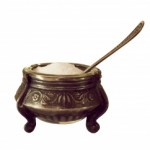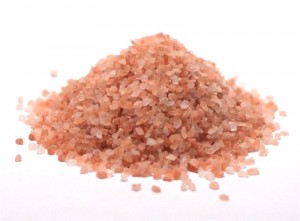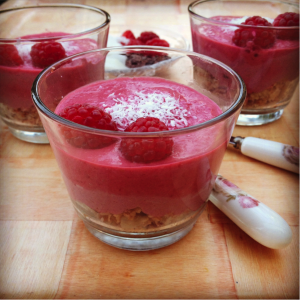 The highly refined, stark white, table and cooking salt that most of us are consuming on a regular basis is almost entirely sodium chloride (or the two mineral elements, sodium and chloride, joined together)… no other minerals. A “raw” or unrefined salt – that is, the way it is when first obtained from nature – generally has some color to it; the color is there because of the presence of many other minerals or trace nutrients – like magnesium, calcium, sulfur, potassium, and many more. All of these other minerals are believed to serve important functions in the human body.
The highly refined, stark white, table and cooking salt that most of us are consuming on a regular basis is almost entirely sodium chloride (or the two mineral elements, sodium and chloride, joined together)… no other minerals. A “raw” or unrefined salt – that is, the way it is when first obtained from nature – generally has some color to it; the color is there because of the presence of many other minerals or trace nutrients – like magnesium, calcium, sulfur, potassium, and many more. All of these other minerals are believed to serve important functions in the human body.
Salt is generally obtained by evaporation of water from the sea or ocean, or mined from rock salt deposits which were formed by long ago evaporation of ancient salt lakes. Most salt that is sold for human consumption is then heated to a very high temperature which breaks its natural crystal structure and then further refined in an industrial process. This results in the removal of almost all of the other minerals, which are then sold for industrial purposes – this, by the way, creates the highest amount of profit for the salt refineries. What’s left over is sodium and chloride, combined as the salt sodium chloride – this is what is then sold for table and cooking use (although some is also used in industry). In addition, about 2% of the final product is usually comprised of various additives like bleaching or anti-caking agents.
Even products sold in grocery or health food stores as “sea salt” are usually highly refined. True, it may have originated from the sea, but if the finished product is stark white and dry, it was probably subjected to high heat and the removal of its trace minerals and nutrients.
Examples of two natural, unrefined salts that still contain a full complement of minerals are Celtic sea salt, obtained from the Atlantic ocean off the Brittany coast of France, and Himalayan salt mined from ancient rock deposits in the Himalayan mountain range of northern Pakistan.
Celtic sea salt harvesting is still done by hand in the Brittany region of France under the watchful eye of the French government. The salt is harvested from shallow, clay-lined beds along the coast line, dried by the sun and wind, and packaged. The resulting product is light gray in color, moist, and contains at least 75 minerals and trace elements. The salt is monitored for pollution or the presence of toxic heavy metals.
Himalayan salt, in contrast, has a beautiful pink or red color which comes from the 84 different minerals found within it. Some marketers have used the term Himalayan salt to refer to any pink or red salt (obtained from various locations), but the one that has been tested for purity and the presence of so many different elements is obtained from the Himalayan mountains of northern Pakistan. Salt is mined from this region of ancient salt deposits, then washed by hand. It has been found to be free of pollution and the presence of toxic metals.
Many natural healthcare practitioners highly recommend that their clients throw out all of the refined, white salt in their kitchen and replace it with one of these. Our bodies are thirsty for the many different minerals and elements found within these salts! Mineral deficiencies within our bodies are believed to be an underlying factor in the development of many chronic health problems.
By the way, it is not only for the health-promoting benefits that many people love these salts – they taste truly wonderful! There is a subtly to these and other natural gourmet salts that attracts the palates of the best chefs from around the world. Do yourself and your family a favor – switch to one (or both) of these salts and reap the benefits on a health level and a food-enjoyment level!
If you’re interested in reading more on this topic checkout the following books:
Seasalt’s Hidden Powers by Jacques de Langre, Ph D.
Water and Salt, The Essence of Life by Dr. Barbara Hendel




